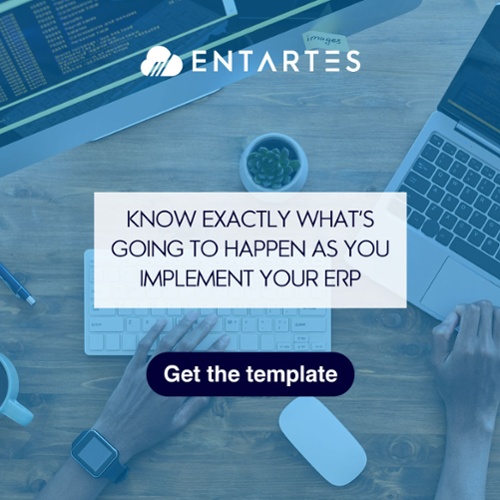ERP systems have developed over the years to become extremely robust, encapsulating every aspect of...
10 Key Problems To Avoid When Implementing An ERP With A Vendor
A poor ERP implementation can lead to financial losses and loss of credibility among company leaders and workers.
Why does this happen? The main reason behind any rollout process gone wrong is often lack of planning.
To help avoid these mistakes, make sure you understand the common problems that arise from poor planning when deploying a new ERP system with the help of a vendor.
A lousy plan (or no plan at all) is one of the main reasons why ERP implementations fail in any business. Regardless if you’ve hired the best vendor in the industry, be that the original manufacturer or a consultant, you need to be prepared for foreseen and unexpected stages and costs.
However, that’s not always the case. Why do businesses fail to map out the migration to a new ERP solution?
In my years of experience, I’ve seen it all. Here are my Top 4 Reasons Why:
-
The ERP vendor does not audit critical management issues nor provides a clear project management plan.
-
The client ignores/does not communicate ongoing resource management issues or bad practices.
-
There are different expectations across stakeholders and business areas that prevent from structuring a complete plan.
-
The client does not understand the full scope and extent of the endeavor.
Here’s a list of problems that generally arise from this lack of planning. I’ve listed them from general to specific, and not in order of importance; they will emerge at different moments in the process depending on several variables.
Some may seem more severe than others, but they all will impede you from achieving the very goal that motivated adopting the ERP in the first place: help your company grow.
What Happens When There's No ERP Implementation Plan?
You Automate A Bad Process
I always tell my clients that they should avoid implementing a new ERP system to identify and solve existing management issues. A software rollout process itself is complex enough to be dealing with current bad practices and inherent mistakes. Ed Featherston from Cloud Technology Partners is adamant about it in this article by CIO magazine: “Automating a bad process only makes a bad process run faster”
You Choose A Bad Time And Rush Things
Lack of planning also prevents you and your vendor from identifying the right time to begin deployment. Granted, many will tell you there’s never a good time for ERP software implementation. However, the timing will never be THE BEST when the company focuses on:
- Quarterly or annual auditing.
- Declining sales or financial difficulties.
- Annual budget planning.
- Change of leadership.
Bad timing boosts anxiety and misplaced expectations. As there’s no good road map, you’ll feel tempted to rush things or do them by the bulk. There’s no way an ERP team can prevent all eventualities; however, planning provides guidance. It is not a one-time event either; it’s made up of several stages, some quicker or slower than others.
You Spend More
Charging into an ERP implementation process with an unclear or underestimated budget increases costs further. You and your vendor start to guess expenses as execution advances, which is something no accountant or CFO will stand for.
However, I cannot stress this enough: there is no standard pricing plan as each process is custom-tailored for a business’ specific needs.
Your Staff Resists Change
People don’t like change. No matter if your business is fully digital or not. When someone becomes accustomed to a process or technology, saying no comes naturally, no matter how you present the benefits. There will indeed be delays and uncertainties that will challenge the process that no plan can foresee, Software Advisory Service states. However, change management is crucial for the process to run as smoothly as possible.
Your ERP Team Underperforms
No planning or poor planning will staff the implementation team incorrectly. As a result, the team will lack the expertise required and allocate resources and efforts inadequately. Support will fall short, and stakeholders will be unrepresented. Any ERP vendor that performs rollout should guide you in finding members who have the right fit from within your organization.
You Lose Valuable Data
It is one of the most painful consequences of a lack of planning that clients usually don’t grasp until it’s too late.
When migrating, data is lost. The goal for any ERP vendor that does implementation is to keep it to a minimum and nonessential information. This data loss it’s also directly related to incomplete or outright nonexistent data audits, outdated or missing security protocols, shortcomings inherent in data collections, and obsolete resource management systems, whether ERPs or others.
Not Enough Testing And Compatibility Issues
These two issues are interrelated. The less testing, the less the ERP implementation team knows if there are compatibility mistakes or concerns, software manufacturer Ramco Systems warns. These errors or omissions range from security to programming and module integration.
Your Connectivity Collapses
What happens when you don’t test enough in case of deploying cloud-based ERP solutions? You don’t know how much pressure the new software will put on your internet connectivity. For on-premise systems, this is rarely a problem, but when the solution is a cloud ERP, the soundness of your network connectivity becomes paramount.
It’s common for adopters to overestimate their company network, software manufacturer AccentERP notes. And it’s understandable; they don’t grasp how complex their processes are until they unify everything under one digital solution.
IT Infrastructure Fails
Without proper planning and testing, software compatibility and module integrations become compromised, and the company network connectivity is stressed out. All of it puts pressure on an asset that many adopters don’t pay much attention to until it breaks down, or they switch providers: the underlying IT infrastructure.
Businesses insist on leaving equipment and processes as they are even though they’ll be renovating or adopting an entirely new management system.
No One Takes Ownership For Mistakes Or Omissions
Lack of planning leads to no project control of issues that arise in the process: situations that escalate in complexity, changes mid-way, derailments due to an unexpected challenge. There’s no proper registration of who does what and when.
The result is confusion and further spending, maxing or exceeding the budget, which leads to inconsistent contracting and invoicing, Invoicera adds.
How Can You Address These Problems?
First, you need to sit down with your ERP implementation provider and outline everything you need to understand before starting rollout. It will be your baseline and safety net to react appropriately to any issues during the process. During this process, make sure to consult your vendor questions and misconceptions you could have about an ERP implementation
Then, sit down with your vendor and plan the ERP deployment with as much detail as possible. Neither will foresee everything, but having a road map will save costs and time. Make sure this plan includes:
- An inventory of critical issues as part of preliminary ERP requirements gathering, says Ed Featherston from Cloud Technology Partners, CIO reports.
- Clear documentation of what exactly will be achieved and when. Implementing by phases is more effective and agile than adopting a waterfall approach, CIO magazine says.
- A Statement of Work (SOW) that outlines change control protocols and potential project derailments.
- A list of all expected expenses, from fixed to variable costs from initial and extra work.
- Automation of the invoicing process for unplanned or last-minute inventory or resource acquisitions.
- Define project governance and oversight roles in both your team and the vendor.
- A change management plan. Protocols to handle rejection should be a specific item within the road map.
- Testing, testing, testing. During and after the rollout phase.
- Standardization of IT equipment and processes in the case of cloud-based ERP. It will prevent data loss and production slowdowns, which in the end will save you money, AccentERP highlights.
5 Key Takeaways From This Blog
-
Poor planning hinders a successful ERP implementation process.
-
These common problems take a toll on data, operations, and productivity.
-
Collateral damages include higher costs, loss of credibility, and an ERP solution adopted halfway.
-
Understanding these deployment problems is the first step towards adequate planning.
-
Your ERP implementation provider should deliver an end-to-end implementation plan as part of its contract.



%20copy-1.png?height=200&name=AdobeStock_422070550(crop)%20copy-1.png)


Blog Comments